Study Notes
Market Equilibrium
- Level:
- AS, A-Level
- Board:
- Edexcel, OCR, IB
Last updated 22 Mar 2021
A market is said to be in equilibrium when where is a balance between demand and supply. If something happens to disrupt that equilibrium (e.g. an increase in demand or a decrease in supply) then the forces of demand and supply respond (and price changes) until a new equilibrium is established.
In some markets, the equilibrium point is changing many times per second as demand and supply try to reach a point of balance (e.g. share prices). In other markets there is much less volatility and price changes are less frequent.
Let's look briefly at how the market equilibrium point is established using basic supply and demand analysis.

Basic Market Equilibrium
Consider the data in the table below. A football club has a fixed stadium capacity of 8,000 seats and has estimated the level of demand at different ticket prices as follows:
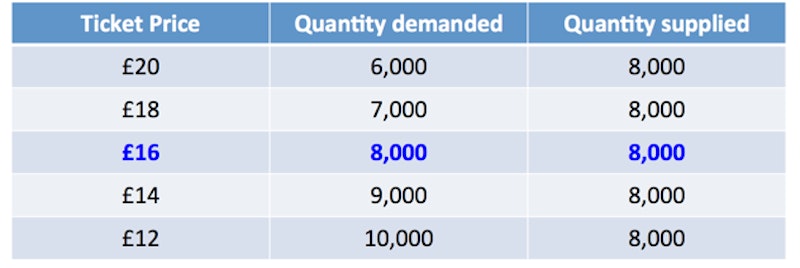
The equilibrium price for the football club is £16 where quantity demanded and supplied = 8,000 tickets. Supply & demand are in balance.
This can be illustrated using demand and supply curves as follows.
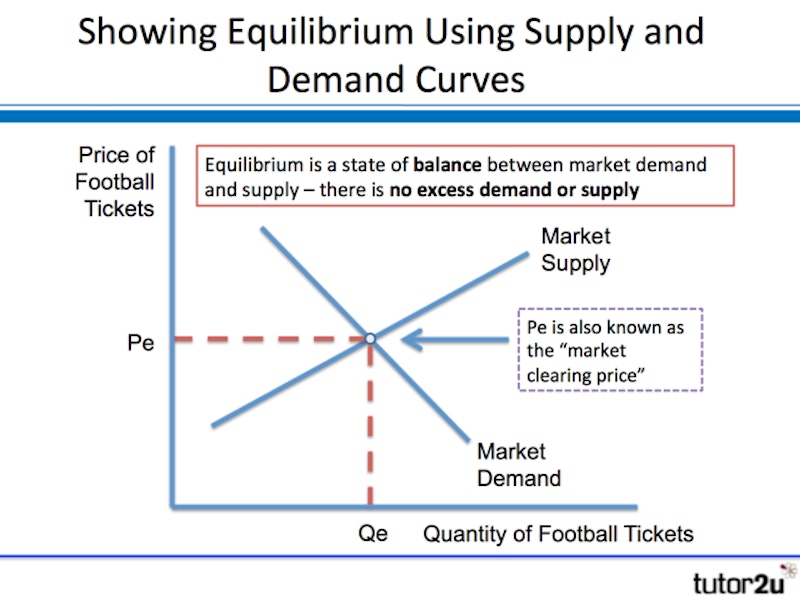
What Happens When Demand Increases?
Here's another example to illustrate what happens to the market equilibrium when demand increases.
The demand for and supply of fresh fish in a local market is shown in the table below. The original equilibrium price is £6 per kg.
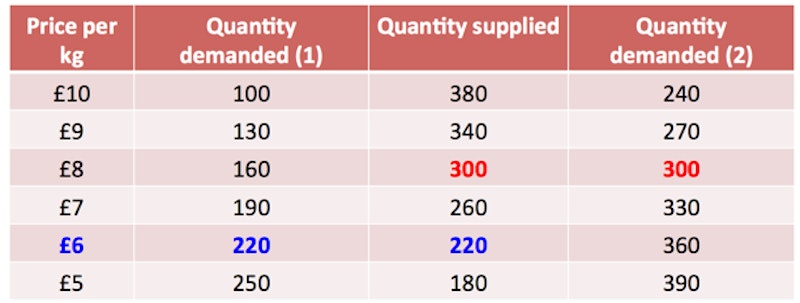
If market demand rises by 80 kg at each and every price, then the new equilibrium price will be £8 with 300kg bought and sold.
This change in market equilibrium - from an increase in demand - is illustrated below.
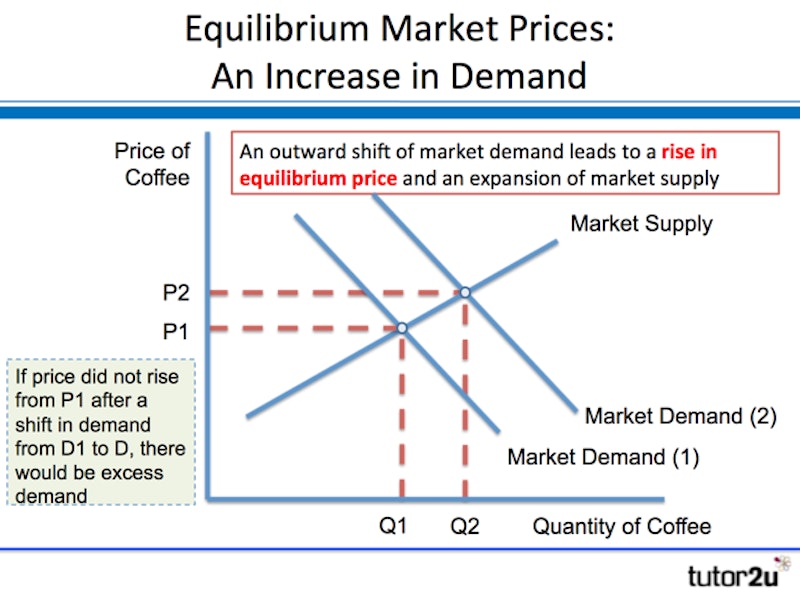
What Happens When Supply Increases?
Here's another example to illustrate what happens to the market equilibrium when supply increases.
The demand for and supply of cocoa beans in a local market is shown in the table below. The original equilibrium price is $30.
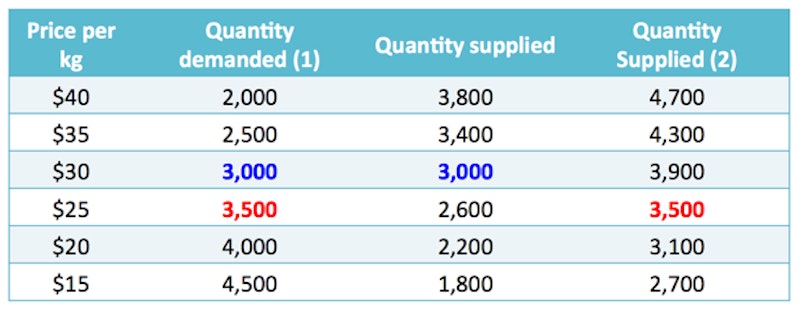
If market supply increases by 900 tonnes at each price, then the new equilibrium price will be £25 with 3,500 tonnes bought & sold
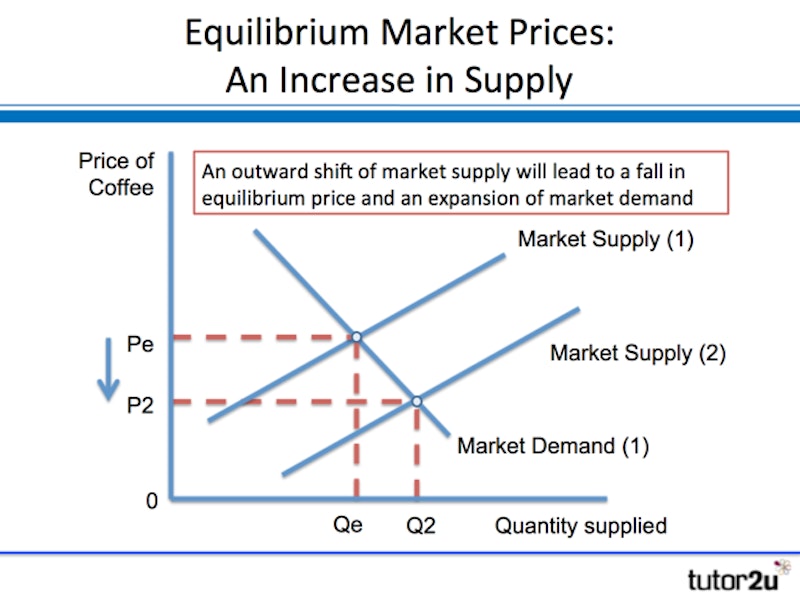
Putting it all together: Equilibrium prices change when conditions of demand/supply alter
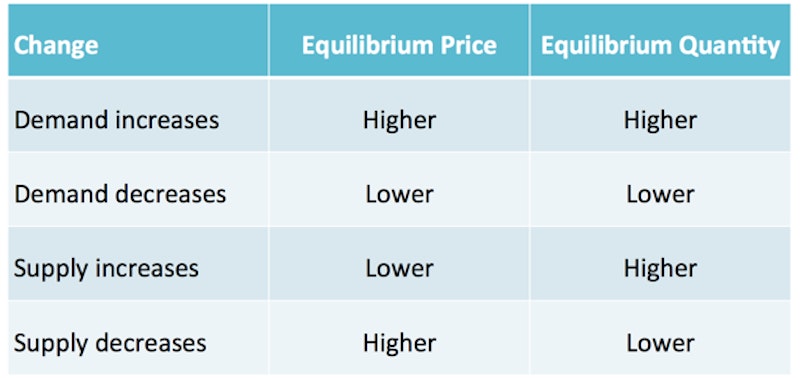
You might also like
Working With Suppliers
Teaching PowerPoints
Buyer behaviour: stimulus-response model
Study Notes

The Business with a 95% Market Share
23rd December 2015

Music Streaming Powers Ahead
13th January 2016

Sunseeker Rides the Waves of Demand for Luxury
18th January 2016
Market Conditions
Study Notes